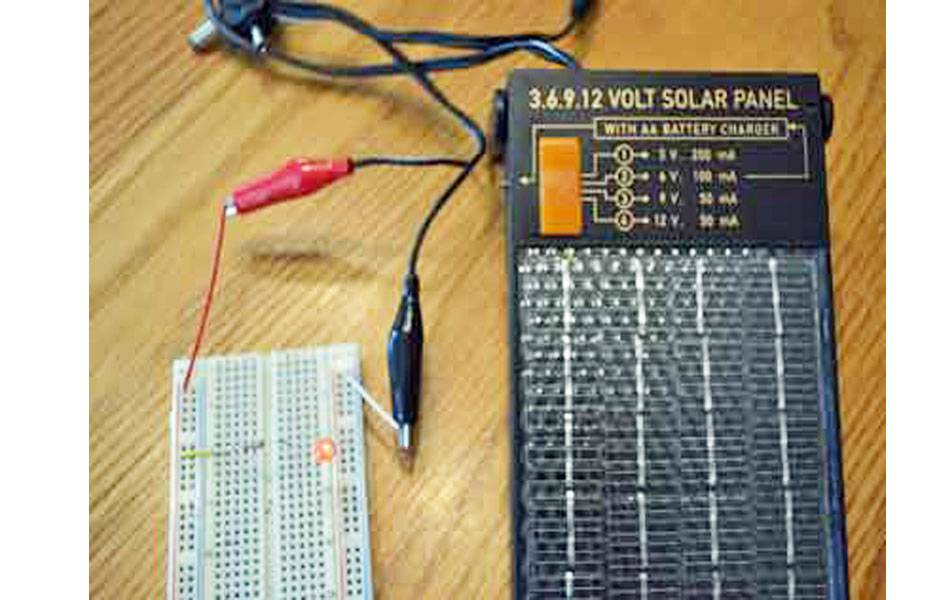
5
DifficultyLED Solar Circuit
Build a circuit to power a LED with solar energy
Posted by Admin / in Energy & Electricity Experiments
A small solar panel provides a good power source for an LED. An LED circuit operates on a low voltage requirement and a very low current requirement. This circuit experiment uses a 9 Volt output from a solar panel to power an LED. More LED's could easily be added to this circuit in series or more effectively, in parallel using the solar panel as a source of energy.
Materials Needed
- Standard LED (red or green)
- Breadboard
- Wire or jumpers
- 390 Ohm resistor
- Small solar panel with 9 Volt output
EXPERIMENT STEPS
Step 1: On the breadboard, place a jumper wire from the positive side of the power rail to one of the breadboard rows. For this project example, row 10 was used for the circuit.
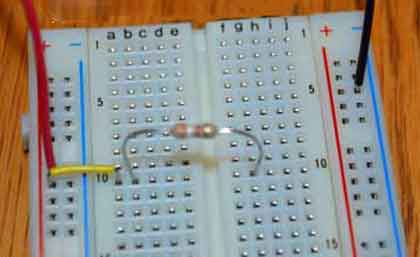
Step 2: Connect one lead of the 390 Ohm resistor into the same row as the jumper wire was placed on the breadboard in the previous step. Place the other lead of the resistor in the same low on the breadboard. Resistors do not have a positive or negative side so it does not matter which end is connected first.
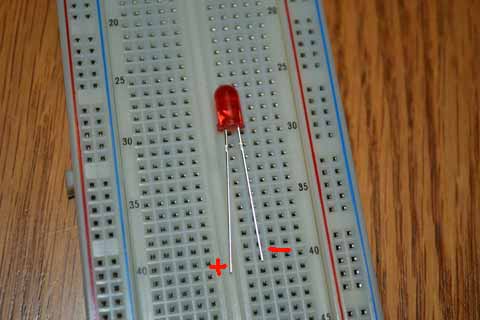
Step 3: Connect the positive side of the LED into the same row as the second leg of the resistor placed in step 2. The longer leg of the LED is considered to be the positive side. Then place the shorter leg (negative leg) of the LED into the negative power rail on the breadboard. The negative power rail is any opening in the column labeled with a "-" on the breadboard.
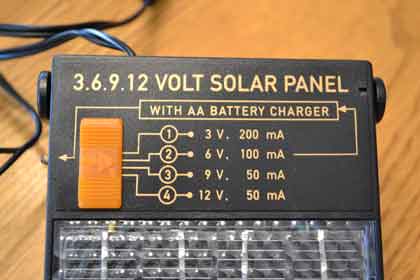
Step 4: Set the power output from the solar panel to 9 volts (if equipped with a selector). Do not set the power output above 9 volts or use a panel greater than 9 volts without using a higher resistor value or the LED will be damaged.
Step 5: Connect the red, (+) positive wire from the solar panel to a positive rail on the breadboard. The positive rail on the breadboard is labeled with a "+". The wire can be placed in any opening in the positive rail column.
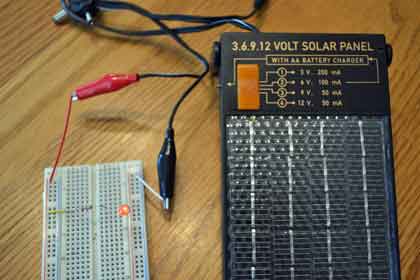
Step 6: Connect the negative lead from the solar panel into the negative rail on the breadboard. This will complete the circuit and if everything was connected properly, the LED will light up.
SCIENCE LEARNED
The low voltage and current requirements of an LED Light Emitting Diode) makes a solar panel a great power source to provide the energy for this type of circuit. The voltage must be reduced in this circuit since a 9 volt battery is greater than the working voltage for this type of LED. If the 390 Ohm resistor is not used, the LED will be damaged and will no longer provide any light. The solar panel also allows fluctuation of the voltage source for the circuit. When the solar panel does not receive direct light or if the panel is covered by a hand, the voltage output is lowered, therefore, the LED will dim. The solar power output is very interactive for kids. They can easily change the intensity of the LED.
-
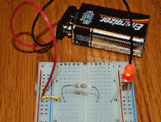
5
DifficultyEasy LED Circuit Project
in Energy and Electricity Experiments
This experiment show you how to build a circuit that will light up an LED.
-
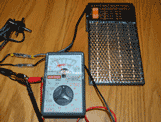
3
DifficultySolar Energy Experiment for Kids
in Energy and Electricity Experiments
Teach kids how light is used to generate electricity in this solar energy experiment.
-
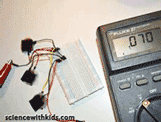
6
DifficultyHow to Make a Simple Battery
in Energy and Electricity Experiments
Make a simple battery using coins and other common items.
-
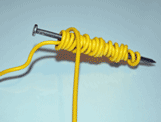
4
DifficultyHow to Make an Electromagnet
in Energy and Electricity Experiments
Test the relationship between electricity and magnetism by making an electromagnet.
-
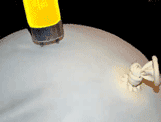
3
DifficultyPower a Light with Static Electricity
in Energy and Electricity Experiments
Use static electricity to power a light bulb!
-
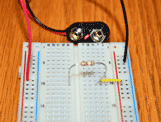
2
DifficultyBeginner Electronics Experiment For Kids
in Energy and Electricity Experiments
This experiment is a good starting point for kids to begin learning about electronics.
